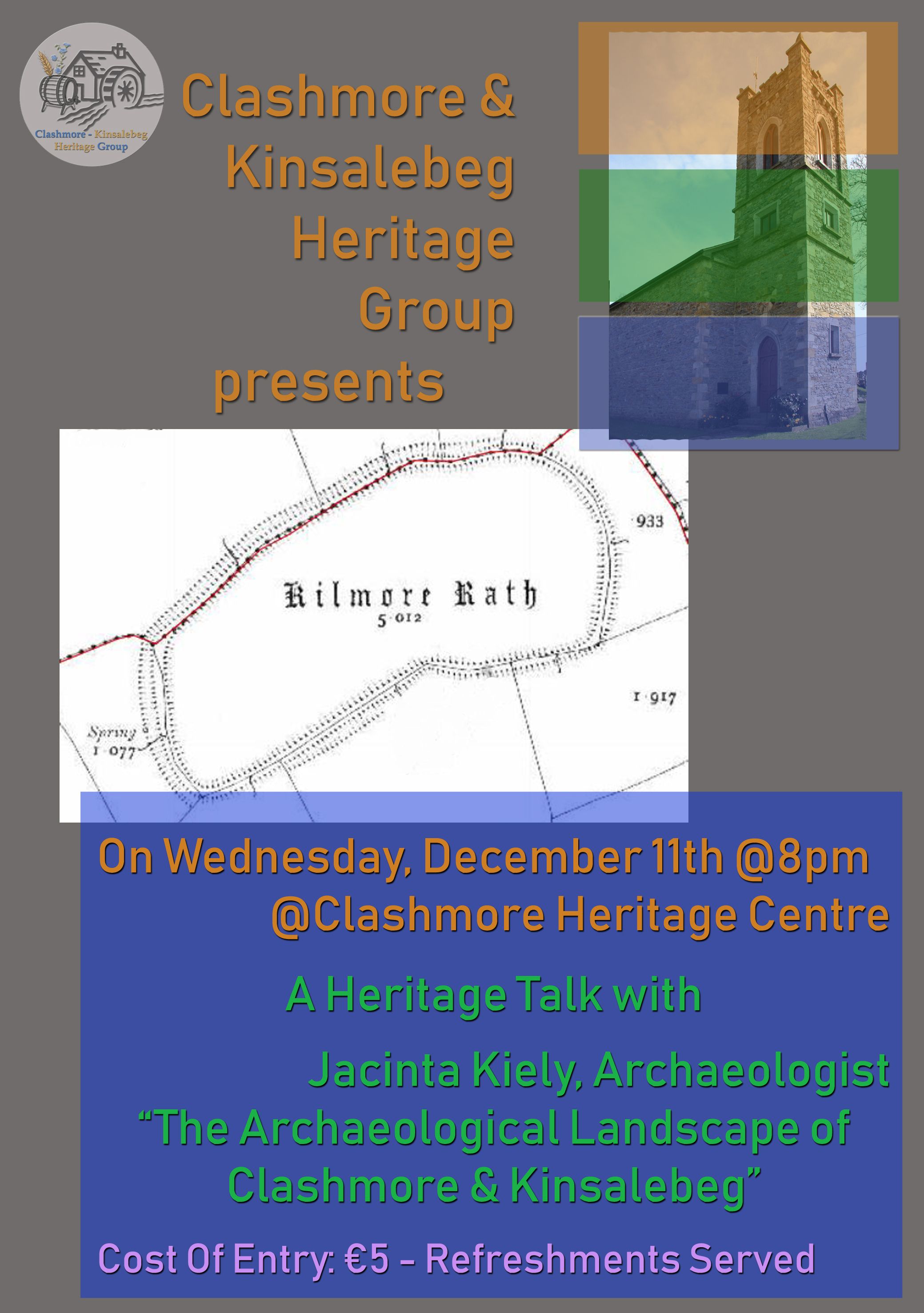
Winter Lecture Series 2019-20
|
|
"Preserving our Heritage ..."
_ |
Clashmore-Kinsalebeg Heritage Group Winter Lecture Series 2019-2020 |
 |
In the Autumn of 2019, we began to plan a Winter Lecture Series by inviting various guest speakers to present on various topics, local and otherwise, on a monthly basis over the Winter of 2019 - 2020. Our first lecture was given by Eamonn Cotter, Archaeologist from Rathcormac in October and we were up and running! We have already hosted five lectures at this stage and are delighted that they have been so well attended which shows that there is a healthy interest in the history and heritage of the area. Here is a synposis of the lectures this far...
|
Date |
Presenter |
Topic |
Oct 18th 2019 |
Eamonn Cotter, Archaeologist |
Reinterpreting Rincrew |
Nov 7th 2019 |
Niall O'Brien, Historian |
Clashmore - A Maritime Parish |
Dec 11th 2019 |
Jacinta Kiely, Archaeologist |
Archaeological Landsscape of Clashmore/Kinsalebeg |
Jan 17th 2020 |
Willie Fraher, Historian |
Clashmore House & The Powers of Clashmore |
Mar 6th 2020 |
Dr. Elena Turk, Archaeologist |
The Heritage of the Small House |
Apr 3rd 2020 |
Dr. Paul MacCotter |
<Placeholder> |
1. "Reinterpreting Rincrew" by Eamonn Cotter, Archaeologist |
|
Eamonn Cotter is a Consulting Archaeologist from Rathcormac, Co. Cork and he presented the 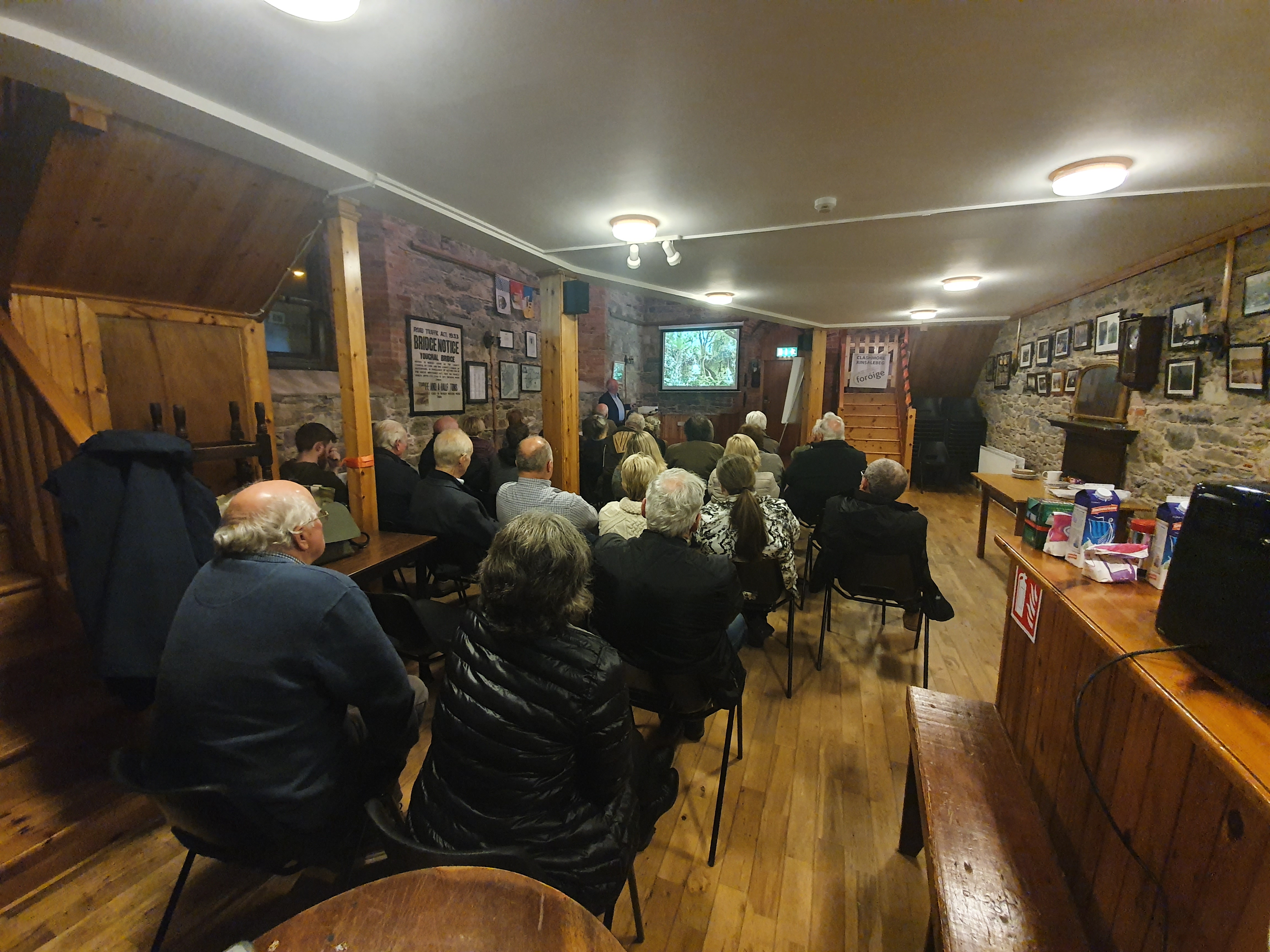 topic of "Rincrew Reinterpreted" wherein he explained about the context of this historic site (if a little unknown locally) and explained why the long-held belief that this was an ancient 'Knights Templar' site should be corrected in modern historic records; here is an excerpt from the 'conclusion' of a paper entitled “A Blow to the Temple: the ‘Monastic Castle' at Rincrew reinterpreted” authored by Eamonn Cotter, Paul MacCotter & Tadhg O'Keeffe. topic of "Rincrew Reinterpreted" wherein he explained about the context of this historic site (if a little unknown locally) and explained why the long-held belief that this was an ancient 'Knights Templar' site should be corrected in modern historic records; here is an excerpt from the 'conclusion' of a paper entitled “A Blow to the Temple: the ‘Monastic Castle' at Rincrew reinterpreted” authored by Eamonn Cotter, Paul MacCotter & Tadhg O'Keeffe.
A notable feature of Irish historiography is the emergence and descent of mistakes which prove extremely difficult to eradicate from the body historic. As an example of this phenomenon one might note that the name of the Anglican diocese of Ardfert & Aghadoe is predicated on the belief that both places were in medieval times episcopal sees that were subsequently united, when in fact there was never a diocese or episcopal seat at Aghadoe (MacCotter 2000b, 161). Another such example involves the alleged move of the see of Ossory from Aghaboe, Co. Laois, to Kilkenny city during the 12 th century. This myth, first propagated during the 16 th century, has long blinded scholars to the reality that the seat of the bishops of Ossory throughout the existence of the diocese has always been located in Kilkenny (Bradley 2015). Rincrew's misidentification as a Templar House is yet another example. The source of the error, probably in the 17 th century, is long lost, but the error should have been rectified just over a century ago when authoritative histories of both military orders made no reference to the place. Misplaced trust in Gwynn and Hadcock (1970) has allowed it an afterlife of nearly half a century. We hope that this paper lays the myth to rest.
Ironically, from the process of debunking the myth Rincrew emerges as a site of national importance. Documentary references indicate that many manors had central, non-castellated settlements in which there were, amongst other elements, a hall and chamber. Some of the so-called ‘hall-houses' may be the chamber-towers of such settlements, the associated halls having disappeared because they were – as documentary records indicate was often the case – of timber; however, the fact that these ‘hall-houses' are remembered as castles into the modern period, combined with their often-imposing physical character, suggest that the settlements to which they were attached were regarded as being of ‘castle rank' in the Middle Ages. Lesser settlements – ones ‘below the castle' as McNeill phrases it – have simply disappeared. We contend that Rincrew, with its small stone-built hall and attached two-storeyed chamber occupying part of a compact courtyard, is the only surviving example above ground in Ireland of a small, non-castellated, Anglo-Norman manorial settlement. As such, it surely merits preservation.
Source:
"A Blow to the Temple: The 'Monastic Castle' at Rincrew Reinterpreted"
Eamonn Cotter, Paul MacCotter & Tadhg O'Keeffe
|
|
2. "Clashmore - A Maritime Parish" by Niall O'Brien, Historian |
|
Our second lecture was presented by Niall O'Brien, Historian who is based in Ballyduff, Co. Waterford and is of coure best known for his very interesting 2008 publication "Blackwater and Bride : Navigation and 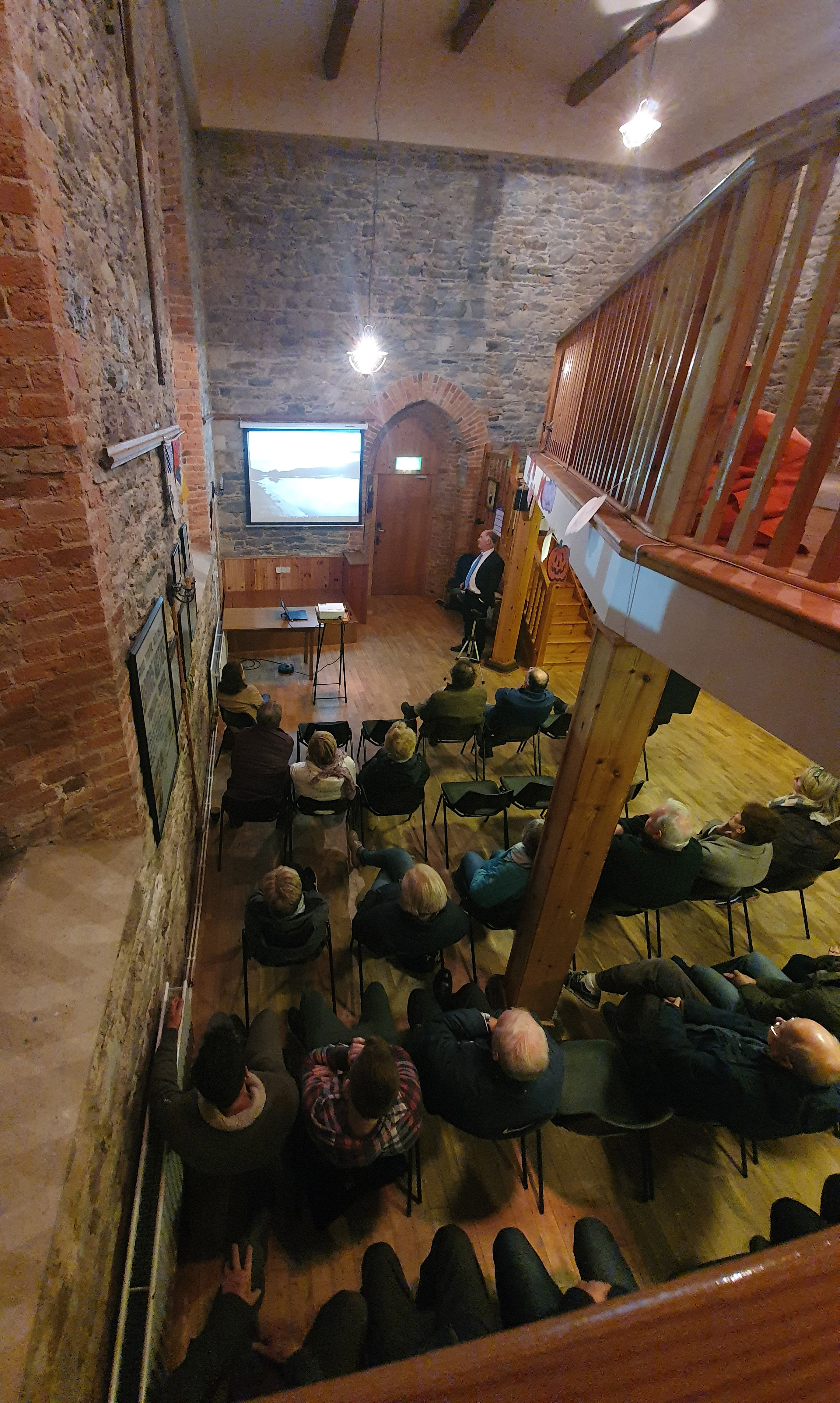 Trade , 7000BC to 2007".
In this lecture, Niall spoke at length about the theory that the River Blackwater once flowed to the sea via two seperate channels, possibly splitting at the Broads of Clashmore, and the larger of the two channels being closed up by a violent storm at some time in history, leaving the present-day 'lesser' channel being the only mouth of the river in modern times.
He then continued to speak about Clashmore's Patron Saint Cronan or Mochua and tried to debunk the various myths regarding his demise at the hands of 'Pirates' and explained in-depth about the pre-history of the original Abbey site of Mochua which is the site where the present-day Heritage Centre stands.
He also gave a very interesting summary of the various quays of this parish dotted along the Blackwater and explained about their origins and uses etc. Trade , 7000BC to 2007".
In this lecture, Niall spoke at length about the theory that the River Blackwater once flowed to the sea via two seperate channels, possibly splitting at the Broads of Clashmore, and the larger of the two channels being closed up by a violent storm at some time in history, leaving the present-day 'lesser' channel being the only mouth of the river in modern times.
He then continued to speak about Clashmore's Patron Saint Cronan or Mochua and tried to debunk the various myths regarding his demise at the hands of 'Pirates' and explained in-depth about the pre-history of the original Abbey site of Mochua which is the site where the present-day Heritage Centre stands.
He also gave a very interesting summary of the various quays of this parish dotted along the Blackwater and explained about their origins and uses etc.
|
|
3. "The Archaeological Landscape of Clashmore/Kinsalebeg" by Jacinta Kiely, Archaeologist |
 |
Our third lecture was presented by our own Jacinta Kiely who is a Consulting Archaeologist and is based at 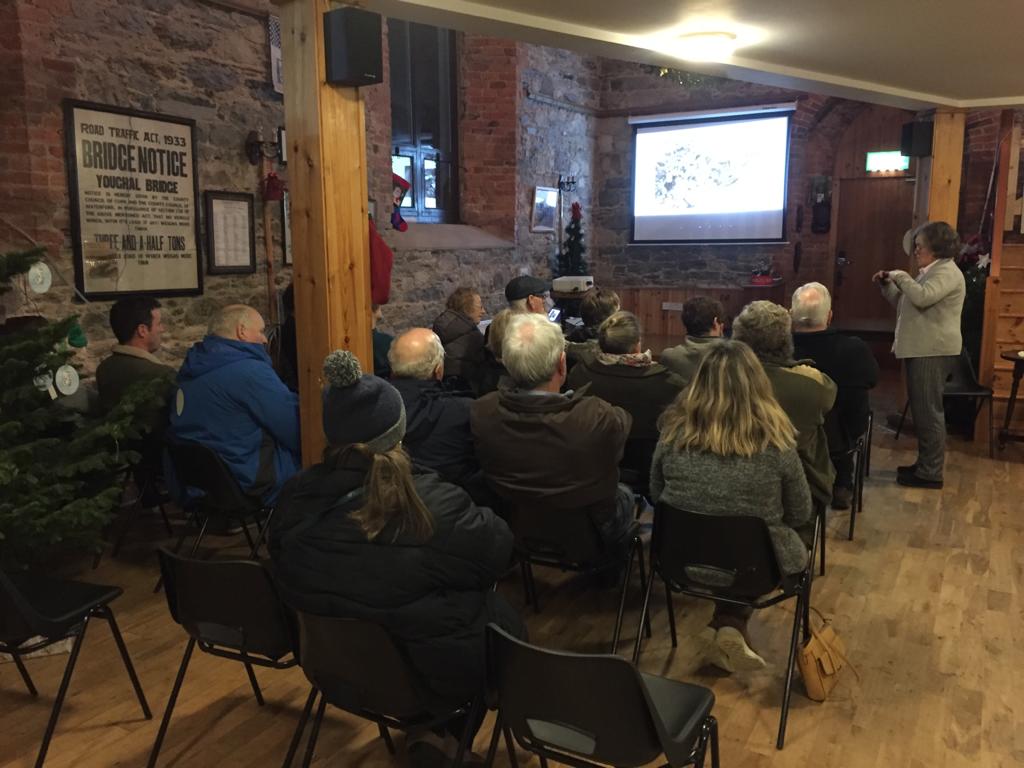 Lickeybeg, Co. Waterford. She explained at length about some of the ecclesiastical and medieval sites within our parish such as the great ecclesiastical site at Kilmore and the various other Ringforts and Souterrains scattered throught our parish. For comparison purposes, she then went on to explain about an archaeological project that she was involved in with Eachtra at Owenbristy, Co. Galway which showed in great detail the various elements of an enlosure and souterrain from this period of history.For anyone interested in viewing some more details of this lecture please click on the following link to the Slide Deck from the night... |
|
4. "The Powers of Clashmore House" by Willie Fraher, Historian |
|
The fourth lecture in our series saw Historian Willie Fraher from Waterford Museum presenting on the 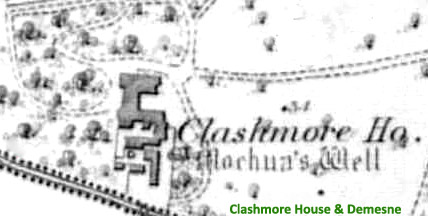 topic of “The Powers of Clashmore House”. As some of you may know, successive members of the Power family were Members of Parliament for the County Waterford in the 18th and 19th centuries so they were indeed a well-known and powerful family with Clashmore House being their seat. |
|
5. "The Heritage of the Small House" by Dr. Elena Turk, Building Archaeologist |
 |
Our most recent Dr. Elena Turk to Clashmore Heritage Centre to speak on the topic of “The Heritage of the Small House” . For many people  when they hear the term ‘The Big House' it conjures up images of grandeur and we imagine period country mansions set in landscaped parks with galleries of paintings, ornate fireplaces and statuary. However, smaller houses have a history just as rich and complex as those larger buildings, and certainly just as interesting. These houses of the everyman evolved from prehistoric hut sites through medieval houses to vernacular cottages and town houses, to become the housing terraces and stand-alone homes that make up our streetscapes today. This illustrated talk will explore the fascinating history of the ordinary house, from prehistory to the present day. |
|
6. Genealogy and Tracing your Family Tree by Paul MacCotter, Historian |
 |
| <Placeholder> |
|
|
|
|